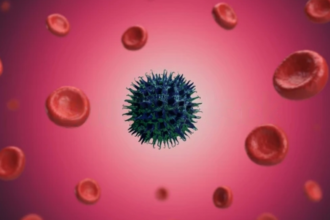The Kordofan conflict is now a key part of Sudan’s terrible civil war. The Sudanese Armed Forces (SAF) and the paramilitary Rapid Support Forces (RSF) are both trying to take over the oil-rich area. As the stakes get higher, civilians continue to suffer as airstrikes, ground combat, and worsening humanitarian problems persist.
The region is important for more than just its oil assets; its location in central Sudan makes it a critical link between numerous important places. Controlling Kordofan gives you power over supply lines, military movements, and energy exports, especially to South Sudan, which depends on Sudanese pipelines to get oil.
What makes Kordofan important from a strategic point of view?
Kordofan has more than 390,000 square kilometers and is made up of the North, South, and West Kordofan states. The area has a lot of political and economic relevance because it has around eight million people living there.
It has oil deposits that are very important to both Sudan and South Sudan, which doesn’t have any land. Pipelines that go through Kordofan let South Sudan send crude oil to international markets through Port Sudan. Any unrest here might stop the flow of oil, which worries both countries. Here is the link to our article on Drone Warfare Revolution
How has the fighting gotten worse?
The SAF has been launching a concentrated effort to regain Kordofan since June. This is because the RSF achieved gains earlier in the year, taking Khartoum and the nearby Gezira region. The army took back certain portions of the capital, but combat swiftly moved to Kordofan.
Airstrikes in el-Fula and Abu Zabad in West Kordofan killed more than 20 civilians, which made people angry. If the bombardments keep going, the RSF said they would attack oil fields in South Kordofan, especially Heglig, in response.
Who is in charge of Kordofan’s land now?
The RSF is strong in Kordofan because it recruits a lot of people from the Misseriya ethnic group in West Kordofan. Experts say that this relationship offers the RSF a tremendous defensive edge because fighters are safeguarding their neighborhoods.
The SAF still controls some oil-producing areas, but the RSF is trying to take over additional areas. There have been several fights in towns like Umm Sumaima. The location is the last line of defense before el-Obeid, which is the capital of North Kordofan. Here is the link to our article on the Sudan Crisis Escalates
What are the effects on people?
The Kordofan conflict has caused a lot of suffering for people. Since the war started, more than 150,000 people have died, and more than 12 million have had to leave their homes.
The UN has denounced recent bombings on civilian infrastructure, including schools and shelters. People have also accused the RSF of doing terrible things. Reports say that more than 450 civilians, including children and pregnant women, were slain in horrific attacks in the Bara district of North Kordofan.
Rights groups have recorded incidents of arson, mass shootings, and victims being burned alive. These activities have made people worried about more war crimes happening.
What’s going to happen next in the Kordofan conflict?
Analysts warn that the Kordofan fight could change the course of the larger war as both sides prepare for a final battle in el-Obeid. If the RSF takes over the area, it might threaten central Sudan and return to Khartoum. For the army, taking control of Kordofan is very important because it will cut off RSF supply lines and allow them to go into Darfur.
But a clear solution is still a long way off because both sides are strongly entrenched, and many people are caught in the crossfire.
Final Thoughts
The Kordofan conflict is no longer a minor battleground; it has become the most important one for Sudan’s existence and stability. The oil wealth, ethnic ties, and strategic location of the area make it a treasure that neither side will give up. International pressure may be the only way to stop the humanitarian crisis from getting worse as the violence gets worse.








